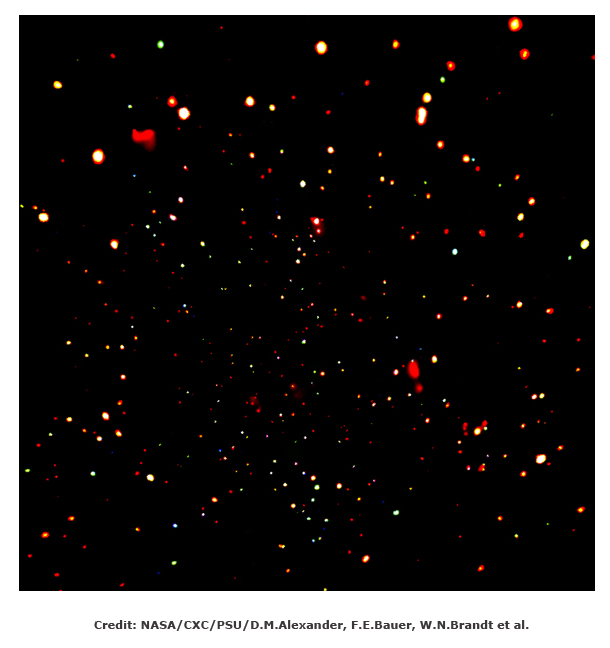 |
Goddard Space
Flight Center NASA > GSFC > Astrophysics Science Division > IXO |
|

You are here: Science» Science Goals» Matter under Extreme Conditions» Supermassive Black Hole Growth» Continued
Supermassive Black Hole Growth – continuedHow do supermassive black holes grow? Does this change over cosmic time? «To find and study growing SMBH at large z, which are rare objects, requires a combination of large effective area (3 m2 at 1 keV), good angular resolution (5 arcsec) and large field of view (18 arcmin). These capabilities allow IXO to reach Chandra´s limiting sensitivity 20 times faster, enabling the first full characterization of the population of accreting SMBHs at z ~ 7, and constraints at z = 8–10, deep into the cosmic "dark age." IXO will measure X-ray spectral slopes and luminosities, which in turn provide constraints on accretion rates, thus assessing directly SMBH growth at large redshifts. Constraints of Fe Kα lines and other spectral features are generally too weak at present to provide useful physical insights (e.g., black hole spin), but will be measured routinely with IXO´s large throughput. 
The Chandra Deep Field North: a deep view of the high-redshift X-ray universe from the Chandra X-ray Observatory. (Click the image for a larger view) For more information, refer to IXO Astro 2010 Decadal White Papers: |